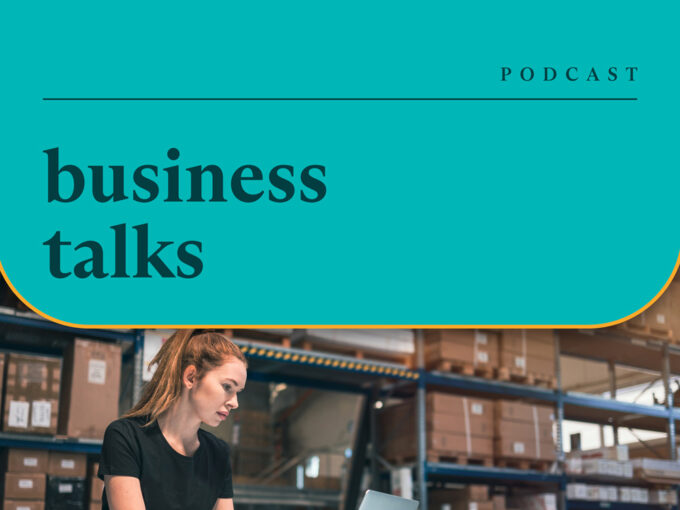Deciding to leave a business can be as difficult as starting or buying a new one. Business succession planning can help you secure the future of the business by having a clear plan in place for leadership and ownership transition.
What is business succession planning?
Business succession planning is the strategic process of identifying and developing internal or external successors to take over the leadership and ownership of a business when the current owner or management team retires, leaves, or is unable to continue. It involves creating a comprehensive roadmap to ensure a smooth transition, minimise disruptions, and preserve the company’s value, market position, and overall success.
Business succession planning options
Transferring a business to a family member
For family-owned companies, the preferable option could be to pass the company’s shares to the next generation to continue the family’s legacy.
However, sometimes this is not practical. For example, adult children may not wish to give up their existing careers to take over the family company, or they don’t have the right experience to take over as the business owner.
If this is an option for you, you need to take into account the planned changes to inheritance tax Business Property Relief and Agricultural Property Relief announced at the Autumn Budget 2024, which are considered further in our article on Succession planning for family businesses.
Trade sale
A trade sale of a company refers to the sale of a business to another company in the same industry or a related sector. It typically involves the transfer of ownership and assets, providing the selling company with an exit strategy while allowing the acquiring company to expand its market presence or enhance its capabilities.
You could trade sale the company’s shares to a third-party purchaser or, possibly, to a private equity house.
A trade sale will often mean that the owner can make a clean break and completely step away from the business.
The price received on a commercial sale can often be the optimal price. From a tax perspective, the gain on the sale of the shares should be taxed at capital gains tax rates.
Capital gains arising on the sale of shares can currently attract capital gains tax rates as low as 10% on the first £1 million of lifetime capital gains that qualify for Business Asset Disposal Relief (BADR). Note that the BADR capital gains tax rate is due to increase to 14% from 6 April 2025 and to 18% from 6 April 2026. While BADR has greatly reduced over recent years and will further reduce with the planned rate increases, a merged tax rate of between 18% (under BADR) and 24% (the standard rate of capital gains tax on a sale of shares) might still be attractive for many business owners.
The downsides of a trade sale can be:
- Going forward, the company will be in the hands of an unconnected purchaser, who may not have the same views on the future direction of the company or the existing workforce or local area, which could impact on the legacy of the family business, or
- The sale process with an unconnected purchaser can result in extensive due diligence, with resulting warranties and indemnities or attempts to chip away at the sale price of the business.
Management buyout
A management buyout (MBO) is when the existing management team purchases the business from its current owners. In an MBO, the management team takes control and ownership of the company to run and grow it independently.
From a tax perspective, like a trade sale, an MBO should solidify capital gains that (under current rules) would be taxed at a merged rate of between 10% and 24% up to 5 April 2024 (and then between 14% and 24% from 6 April 2025 and between 18% and 24% from 6 April 2026).
From a commercial perspective, an MBO could be a good option because:
- The buyers are known, and so the business owner would likely have more control over the transaction and the make-up of the new management team,
- The buyers are more likely to share the business owner’s ethos and commitment to the local workforce and area in order to protect the legacy of the family business,
- Warranties and indemnities would ordinarily be less restrictive, as the management will understand the business that they’re acquiring, and
- In many MBOs, there will be less requirement for external funding as the proceeds for the sale of the shares will take the form of cash already in the business plus vendor loan notes.
However, on the flip side:
- As the MBO is a ‘friendly’ transaction, the agreed price might not be the optimal price that could otherwise be achieved on a trade sale, and
- It’s also likely that the owner will receive less upfront cash on completion than would be the case with a trade sale. A substantial amount of the sale proceeds might be in the form of loan notes payable out of future profits of the company over several years, which could be at risk of becoming irrecoverable. As a result, this may require the owner to remain involved in the business until the vendor loan notes have been repaid.
Employee Ownership Trust
An Employee Ownership Trust (EOT) is an alternative legal structure that is gaining popularity, where a trust holds shares of the business on behalf of its employees.
This involves a sale of a controlling interest in the company to an EOT for an arm’s length price.
With an EOT structure, the majority of shares in the company are owned by the EOT for the long-term benefit of the company’s employees.
A lot of the same considerations mentioned above that apply to an MBO will also apply on the sale to an EOT.
In EOT sales, a higher proportion of the sale price is often deferred and extends over a longer period compared to trade sales or MBOs. It’s crucial to model this carefully to avoid potential constraints on the ongoing business due to future cashflow commitments.
Tax and Employee Ownership Trust
From a tax perspective, sales to EOTs have attracted a lot of media interest because no capital gains tax will arise on the sale of the shares by the owner to the EOT. However, it’s important that the sale to an EOT should not solely be driven by the beneficial tax treatment.
Making sure the culture of the business is commercially suited to employee ownership should be a more important driver. A key focus for a successful transition to employee ownership will likely include careful consideration of the company’s values, purpose and behaviour of its people. To achieve a successful transaction to employee ownership may require the company’s culture to change over time.
Also, the no-tax treatment should be looked at as a trade-off against a lower price for a friendly transaction with more deferred consideration, such that the position net of tax could be more akin to the net position on a trade sale or MBO.
For this no-tax treatment to be available, there are multiple conditions that must be met, with extra conditions applying from 30 October 2024, as announced at the Autumn Budget. One important condition is that the EOT must hold a controlling interest in the company or, looking at it the other way, the previous business owners must relinquish control to the EOT.
The benefits of employee ownership
Employee ownership is likely to benefit people-focused businesses that are looking to retain good quality staff. An EOT structure can:
- Result in the company’s people being more committed to the success of the business,
- Improve employment standards,
- Assist with recruiting/retaining people,
- Result in stronger corporate social responsibility and investment in the local community, and
- Ultimately flow through to achieving better results.
As with an MBO, a strong and motivated new management team is crucial to take the company forward. However, it’s vital that the new management team must have fully bought into the EOT structure.
Business exit strategy
If there are no family members wishing to take over the business, trade sales (including private equity) and MBOs are well trodden paths and can work in the right circumstances.
EOTs with the majority of shares being owned collectively for the long-term benefit of the company’s employees as a group also appear to be becoming more popular. However, when considering the obvious tax advantages, don’t overlook the key commercial and cultural aspects of employee ownership.
When looking at succession planning, it’s important to get advice early on. If you’d like help identifying the right route to take for your business, get in touch with our team; we can also help you to develop a business exit plan.
Useful Resources
Contact us
Partner, Bristol
Key experience










